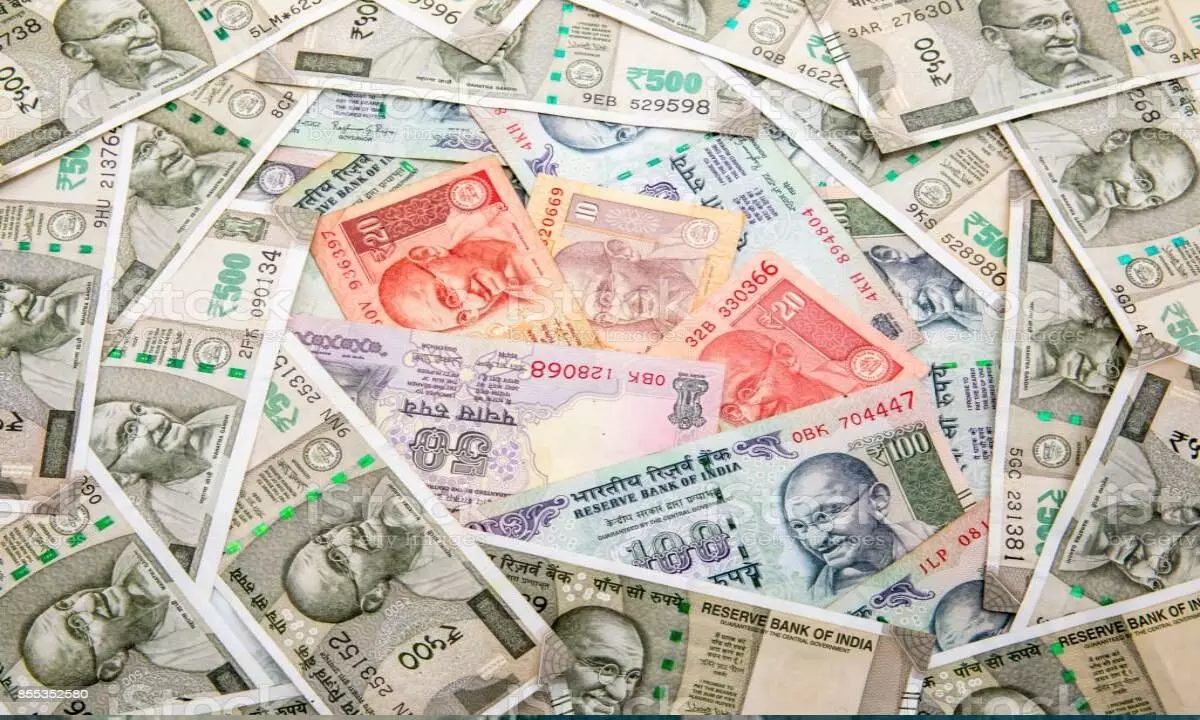Is the Indian rupee plunging or is it making a mountain out of a molehill?
The rupee has crossed the psychological barrier of 80 against the US dollar resulting in chaos and confusion everywhere. Is our economy in good shape or are we moving towards an economic disaster because what else can explain the slide in our currency?
image for illustrative purpose

The rupee has crossed the psychological barrier of 80 against the US dollar resulting in chaos and confusion everywhere. Is our economy in good shape or are we moving towards an economic disaster because what else can explain the slide in our currency?
The cacophony around the rupee touching 80 against the dollar is the perfect case of making a mountain out of a molehill. Let's first look at the history of the rupee. At the time of our independence from the British raj, the rupee was 3.3 against the dollar. The value of 80 today means an annualised depreciation of about 4.4 percent over 75 years. The rupee-dollar rates were announced by the government in those days and there was no real market-driven equation. So, let's cut to 1966, when the first big devaluation of rupee was done, which brought the value to 7.5 against the dollar. If we take 1966 as the base year, then the annualised depreciation of the rupee till now comes to 4.3 percent.
In 1975, India de-pegged from sterling and pegged the rupee to a basket of currencies, depreciating it to about 9, indicating an annualised depreciation of 4.76 percent till now since 1975. After big bang economic reforms in 1991, the rupee stood at about 26 and annualised depreciation has been 3.8 percent while for the last 8 years the annualised depreciation stood at 3.2 percent. The long-term depreciation of the rupee against the dollar is quite structural and natural.
The depreciation of the Indian currency against any country with a comparatively sustained lower inflation rate is the long-term picture and unless this basic macroeconomic phenomenon reverses, the rupee will continue to depreciate and at some point will also cross 100 against the dollar.
The current stage of the Indian economy vis a vis the American economy means that India will not only continue to grow faster but will also have higher inflation rate as well at least in the foreseeable future. A 3 to 4 percent annual decline in the rupee is quite expected. The pace can become slower or faster depending upon several short-term factors, a few of which are at play right now.
The increase in interest rates by the US Federal Reserve and increasing allocation of investment in US base securities because of rising uncertainty in global markets are major causes of the current decline in the rupee. The demand for dollars to invest in dollar-denominated securities is a global phenomenon and all economies have seen its impact. The Dollar Index is near its 20-year high.
In fact, the depreciation of the rupee against the dollar has been lower in comparison to major currencies such as the pound, euro and yen i.e., the rupee has appreciated against these other major currencies of the world. It also means that although investments are being reallocated to dollar-denominated securities, still India has secured a relatively higher rank in comparison to other major economies, owing to its economic recovery and potential. As and when the tide reverses, India is expected to be the top destination for returning foreign investors.
Even though the rupee has been declining against the dollar, it doesn't mean we are becoming poorer. We are growing faster; our income levels have been rising and our purchasing power has been increasing. India's real broad effective exchange rate, which takes into account the relative consumer prices between the two economies, has been appreciating and it still continues to appreciate as expected with economic growth and rising income levels.

